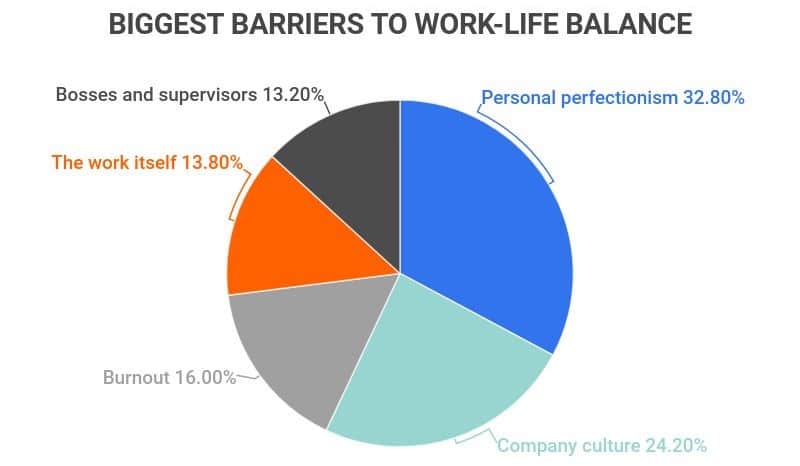Work Life Balance in 2023
Work Life Balance in 2023
Introduction
The concept of work-life balance has gained increasing attention in recent years, as people seek to balance their professional and personal lives in a rapidly changing world. In 2023, work-life balance continues to be an important issue for individuals, organizations, and society as a whole. In this blog, we will discuss the importance of work-life balance in 2023, the current state of work-life balance, and strategies to achieve work-life balance.
Importance of Work-Life Balance in 2023
1. Health and Well-being: Work-life balance is crucial for maintaining good physical and mental health. Long hours of work, stress, and poor work-life balance can lead to burnout, fatigue, and various health problems.
2. Productivity and Performance: Achieving work-life balance can have a positive impact on productivity and performance. A balanced work-life can increase motivation, creativity, and engagement, leading to improved job satisfaction and better performance.
3. Workforce Retention: Organizations that prioritize work-life balance are more likely to attract and retain talented employees. Employees who are able to balance their work and personal lives are more likely to be satisfied with their jobs, leading to improved retention rates and reduced turnover costs.
4. Workforce Diversity and Inclusion: A work-life balance culture can promote workforce diversity and inclusion by accommodating different lifestyles, personal circumstances, and cultural backgrounds.
Current State of Work-Life Balance in 2023
The current state of work-life balance in 2023 is a mixed picture. On one hand, many organizations have recognized the importance of work-life balance and have implemented policies and programs to support employees' work-life balance needs. On the other hand, long working hours, high workload, and work-related stress continue to be major challenges for many workers, especially in industries such as healthcare, finance, and technology.
Some of the current trends and challenges in work-life balance in 2023 include:
1. Remote Work: The COVID-19 pandemic has accelerated the adoption of remote work, allowing employees to have more flexibility in their work schedule and location. However, remote work can also blur the boundaries between work and personal life, leading to longer working hours and reduced work-life balance.
2. Technology: Technology has enabled greater flexibility and efficiency in work, but it can also lead to a 24/7 work culture where employees feel pressure to be always available and responsive.
3. Gig Economy: The gig economy has created new opportunities for flexible work arrangements, but it can also lead to unpredictable schedules and income instability, making it challenging for workers to achieve work-life balance.
Strategies for Achieving Work-Life Balance in 2023
Achieving work-life balance in 2023 requires a combination of personal and organizational strategies. Here are some strategies that individuals and organizations can adopt to achieve work-life balance:
1. Time Management: Effective time management can help individuals balance their work and personal responsibilities. This includes setting priorities, delegating tasks, and managing distractions.
2. Flexible Work Arrangements: Organizations can offer flexible work arrangements such as flexible hours, compressed work weeks, and telecommuting to accommodate employees' work-life balance needs.
3. Employee Benefits: Employee benefits such as paid time off, parental leave, and wellness programs can help employees manage their work and personal responsibilities.
4. Technology Policies: Organizations can establish technology policies such as email-free weekends and after-hours work restrictions to reduce the pressure to be always available.
5. Cultural Change: Achieving work-life balance requires a cultural shift that values work-life balance and encourages employees to prioritize their personal lives. This includes promoting a healthy work-life balance culture, training managers to support work-life balance, and recognizing employees' achievements both at work and in their personal lives.
Conclusion
Work-life balance is a crucial issue in 2023 and beyond, as people seek to balance their personal and professional lives in a changing world. Achieving work-life balance is important for individuals, organizations, and society as a whole. By prioritizing work-life balance, individuals can maintain good physical and mental health, improve productivity and performance, and achieve greater job satisfaction. Organizations that prioritize work-life balance can attract and retain talented employees, promote workforce diversity and inclusion, and improve employee engagement and retention rates.
To achieve work-life balance in 2023, individuals can adopt personal strategies such as effective time management, prioritization, and self-care. Organizations can support work-life balance by offering flexible work arrangements, employee benefits, technology policies, and cultural change. However, achieving work-life balance requires a shared responsibility between individuals and organizations, as well as a cultural shift that values work-life balance and encourages employees to prioritize their personal lives.
In conclusion, work-life balance remains a crucial issue in 2023 and beyond, as individuals and organizations navigate a changing world of work. By prioritizing work-life balance, individuals and organizations can achieve better physical and mental health, improve productivity and performance, and build a more engaged and diverse workforce. Achieving work-life balance requires a combination of personal and organizational strategies, as well as a cultural shift that values work-life balance and recognizes its importance for individuals, organizations, and society as a whole.

Comments
Post a Comment